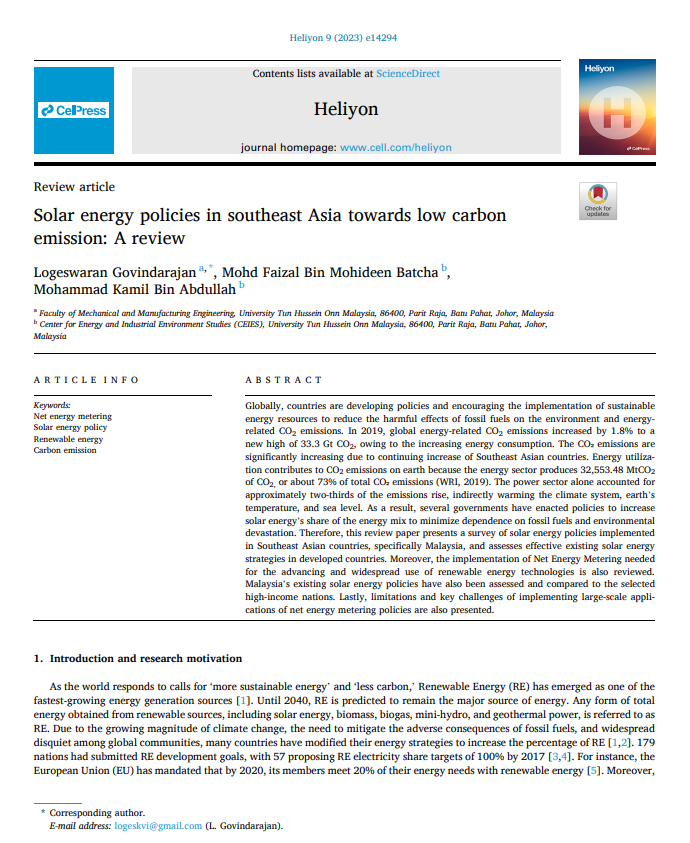
Keyword(s)
Author(s)
(a) Logeswaran Govindarajan (b)Mohd Faizal Bin Mohideen Batcha (b) Mohammad Kamil Bin Abdullah
Country(ies)
Publisher
Published Date
Access
DOI
Globally, countries are developing policies and encouraging the implementation of sustainable energy resources to reduce the harmful effects of fossil fuels on the environment and energy-related CO2 emissions. In 2019, global energy-related CO2 emissions increased by 1.8% to a new high of 33.3 Gt CO2, owing to the increasing energy consumption. The CO₂ emissions are significantly increasing due to continuing increase of Southeast Asian countries. Energy utilization contributes to CO2 emissions on earth because the energy sector produces 32,553.48 MtCO2 of CO2, or about 73% of total CO₂ emissions (WRI, 2019). The power sector alone accounted for approximately two-thirds of the emissions rise, indirectly warming the climate system, earth’s temperature, and sea level. As a result, several governments have enacted policies to increase solar energy’s share of the energy mix to minimize dependence on fossil fuels and environmental devastation. Therefore, this review paper presents a survey of solar energy policies implemented in Southeast Asian countries, specifically Malaysia, and assesses effective existing solar energy strategies in developed countries. Moreover, the implementation of Net Energy Metering needed for the advancing and widespread use of renewable energy technologies is also reviewed. Malaysia’s existing solar energy policies have also been assessed and compared to the selected high-income nations. Lastly, limitations and key challenges of implementing large-scale applications of net energy metering policies are also presented